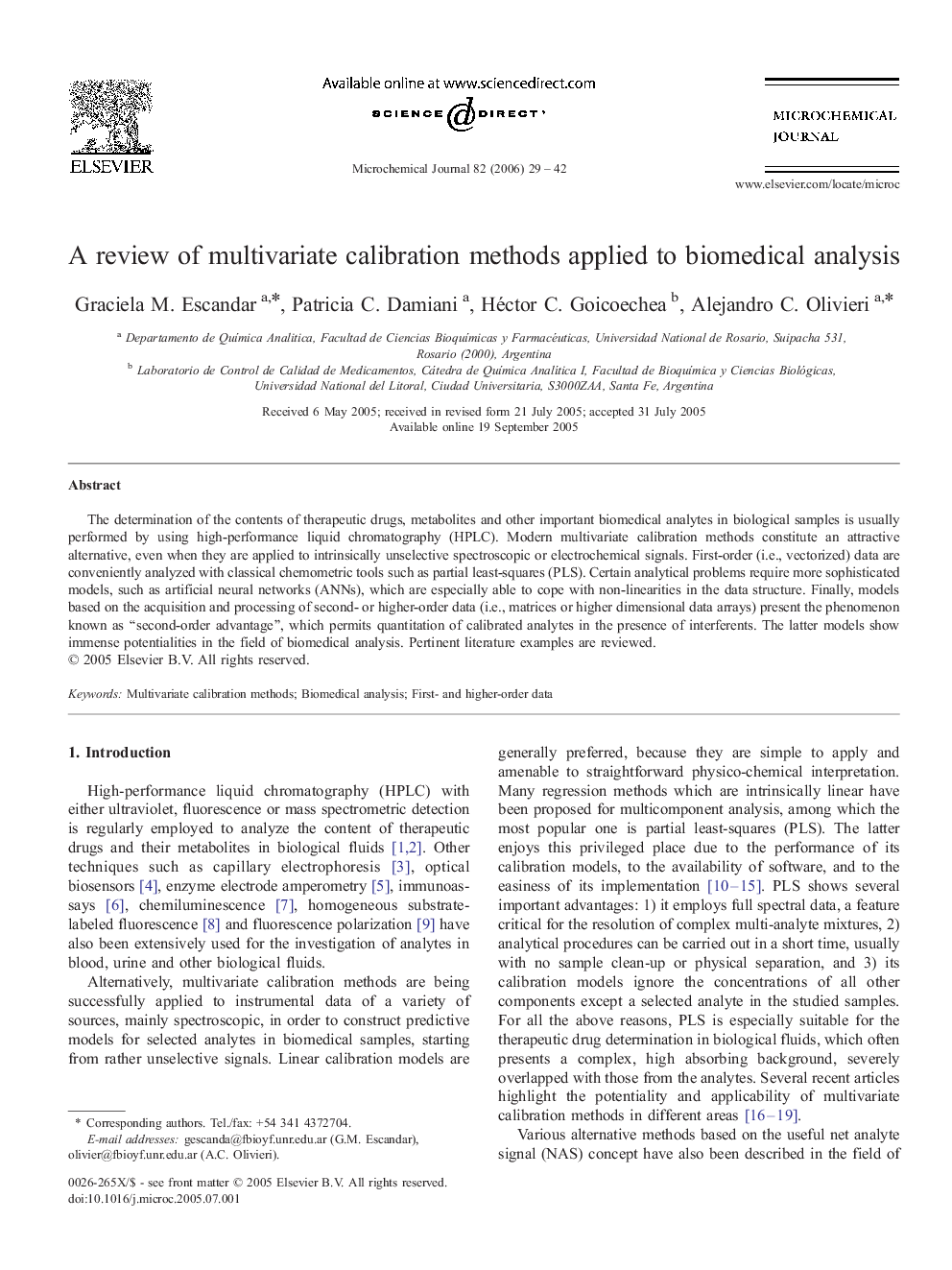| Article ID | Journal | Published Year | Pages | File Type |
|---|---|---|---|---|
| 1228502 | Microchemical Journal | 2006 | 14 Pages |
The determination of the contents of therapeutic drugs, metabolites and other important biomedical analytes in biological samples is usually performed by using high-performance liquid chromatography (HPLC). Modern multivariate calibration methods constitute an attractive alternative, even when they are applied to intrinsically unselective spectroscopic or electrochemical signals. First-order (i.e., vectorized) data are conveniently analyzed with classical chemometric tools such as partial least-squares (PLS). Certain analytical problems require more sophisticated models, such as artificial neural networks (ANNs), which are especially able to cope with non-linearities in the data structure. Finally, models based on the acquisition and processing of second- or higher-order data (i.e., matrices or higher dimensional data arrays) present the phenomenon known as “second-order advantage”, which permits quantitation of calibrated analytes in the presence of interferents. The latter models show immense potentialities in the field of biomedical analysis. Pertinent literature examples are reviewed.
